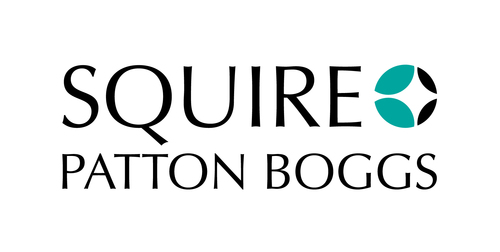Business Unusual: Unlocking Lockdown

As agencies start to plan how they will re-open their office doors, David Regan of global law firm Squire Patton Boggs explains what needs to be considered.
Following Boris Johnson’s announcement on 10 May, employers are now considering how they will get their staff back in the workplace – and finding that there are at least as many vexed issues in bringing employees back as there were in closing the office in the first place!
It is not just a question of employees pitching up on the day – there are lots of practical issues which businesses are likely to encounter in the return process. The purpose of this article is to set out some of the common issues businesses will face and some ways of approaching them –there are of course no 'right answers' in this situation; rather businesses will need to carry out a nuanced review of all the facts before coming to a decision which suits the business and, in some cases, each individual employee.
Health & Safety
The recent Government guidance has reminded businesses of their underlying health and safety obligations. Whilst in the public perception these obligations were previously satisfied by little more than sticking up HSE posters, putting

"Caution Hot!" signs by the coffee machine and putting striped tape across any steps or protruding power leads, these obligations are of course significantly more extensive in reality and require proactivity on the part of an employer, not least in the form of a risk assessment.
Given we are in the grip of a global pandemic caused by a single virus AND the Government guidance on returning to work requires employers to carry out a risk assessment, one might have thought that the HSE would have provided a sample risk assessment tailored for COVID-19, but while it states this to be the case, on closer inspection this is simply a standard risk assessment and is not COVID specific (although the HSE for Northern Ireland has prepared one that is).
"What is an acceptable risk for one business will be unacceptable or impracticable for another."
So what might businesses need to consider as part of any such risk assessment?
Who might be harmed? (staff, visitors, cleaners, contractors, drivers, etc).
Potential ways of minimising or controlling the hazards (handwashing, cleaning, social distancing, PPE, temperature testing, wearing of gloves).
What can be done to assist employees dealing with these hazards? (ensure there are handwashing facilities with adequate supplies of soap, water, paper towels, ensure that cleaning takes place with appropriate thoroughness and appropriate regularity, redesign offices to reinforce social distancing where appropriate, monitor employees symptoms).
What can be done to encourage employees to comply with their obligations? (regular reminders to wash hands and of public health advice, check to ensure cleaning protocols, enforce social distancing through appropriate measures in the office).
Practical issues around restarting the office (has the air conditioning been switched on recently? Has the water been run to reduce Legionnaire's risks? Do the lifts or other machines need servicing?, etc).
Clearly, each risk assessment needs to focus on the specific circumstances of the business. What is an acceptable risk or a reasonably practicable preventative measure for one business will be unacceptable or impracticable for another. However businesses need to start thinking about these issues now if they are to prepare properly.
Mental Health
Another risk factor which needs to be considered (indeed one which may well warrant its own risk assessment) is employees' mental health – there are any number of issues which may be affecting this currently, but employers would be wise to consider the effects of:
coronavirus (which creates uncertainty which can affect employees mental health);
lockdown (which can increase a sense of isolation for employees, exacerbating or leading to mental health issues);
poor management (it being harder to manage effectively remotely);
medical issues (whether personal or family);
financial issues (whether due to furlough or pay cuts, or worries about potential future redundancy);
productivity/ performance concerns (employees may feel under extra scrutiny as they are working remotely and managers cannot see how hard they are working).
Returning to office-based is of course not a panacea for these issues. In fact it will likely lead to further concerns – for example, many employees may feel uncomfortable travelling to work on public transport. There has also been a rise in obsessive compulsive behaviours during lockdown – this too may impact employee mental health on their return.
Who should come back?
Once businesses have decided to come back to work and what they can do to protect their employees, the next question is who do you bring back to work and how quickly?
Do you want to:
bring back all of the employees at once (which is unlikely to be suitable for all businesses, particularly where social distancing cannot be maintained)?
bring employees back in shifts to reduce occupancy (helping manage COVID-19 risk, but potentially impacting productivity) ?
open the office with a skeleton staff so it can be used wherever absolutely necessary, but to continue to allow/require employees to work from home? (leading to risks of a confused workforce – guidance needs to be clear to avoid mixed messages)
Again, there is no definitively right or wrong answer to this; it is something which will depend upon the needs of each business. However, it may help employers to consider the following:
which roles they need in the office first;
whether this is client sector specific;
has the technology that has enabled working from home been effective;
should any office-based employees who have been furloughed be brought back first, before other employees are brought into the office;
how will communications be maintained where some employees are in the office and some are not?
A special set of questions arises for those employers who have furloughed staff – do you bring them back from furlough and, if so, how many and when? Equally, if you have rehired any employees simply so they can benefit from furlough, at what point do you intend to (re-)terminate?
Again, there are no easy answers, although in the case of furlough some of this may come in the next few weeks as we learn more about the tapering of the furlough scheme.
What if you don't need all the employees?
Many employers will regrettably need to consider whether their commercial outlook justifies retaining all of their staff. If not, and there is no longer an option to place staff on paid furlough, then it might be necessary to consider redundancies. Of course, where 20 or more employees are potentially at risk of redundancy, this requires collective consultation, meaning that you need to factor in the necessary time to carry out a consultation process. This is particularly problematic where some of those employees who are at risk of redundancy are presently on furlough and the employer is trying to minimise the financial exposure to those redundancies.
If all else fails, be transparent and open
As can be seen, the process of seeking to return to what will, for now, be a new normality, will not be easy. There are certainly more questions than answers at this stage. However, provided businesses treat their staff with openness, honesty and transparency, then whilst there will undoubtedly be teething issues, the hope is that operations will resume – if not as smoothly as before, as least as smoothly as possible.
David Regan is a Director at Squire Patton Boggs dealing exclusively in labour and employment law
